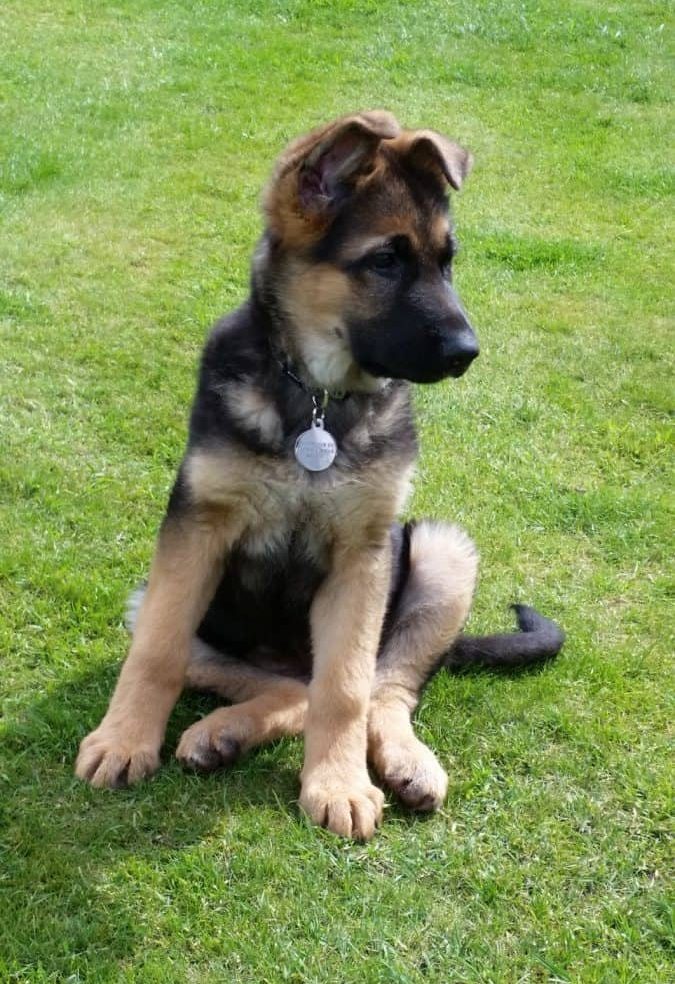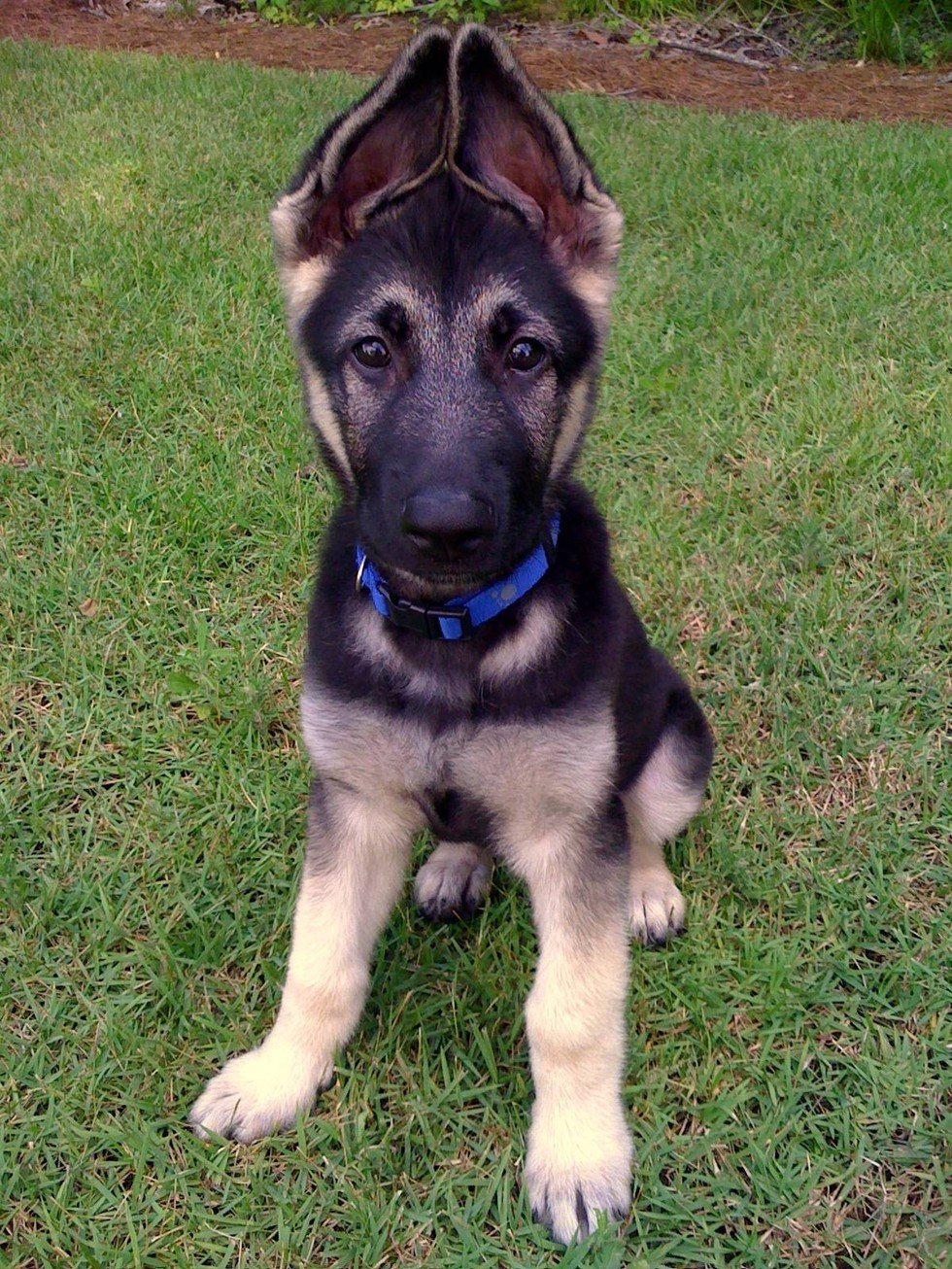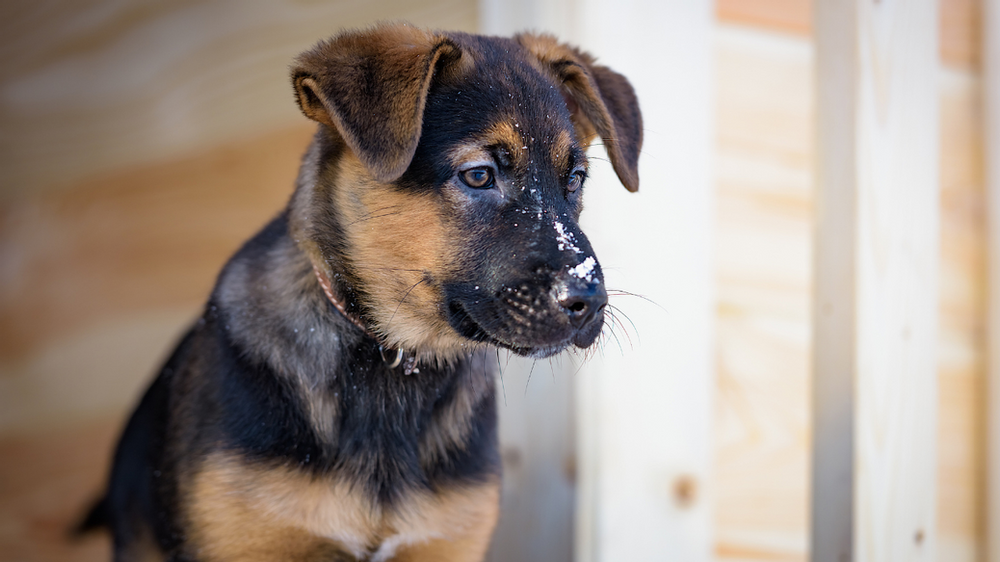What Do Dogs Have Floppy Ears
- Here are some types of dogs with Floppy Ears Beagle. The breed originated in the 16th century and was used by English hunters as hunting dogs Basset Hound. Charming short-nosed Baset used to be an excellent hound of rabbits and small animals, and today it is a family dog. Black and Tan Coonhound Bloodhound English Cocker Spaniel Setters Afghan Hound Weimaraner
Health Concerns Associated With Floppy Ears On A German Shepherd
When a dogs ears lay flat, less air can circulate through their ears, and more moisture can build up. This can lead to a couple of issues, including:
- Need for more frequent cleaning: It is always essential to clean your dogs ears, whether they are pointy or not, but if your dog has floppy ears, they will need to have their ears cleaned more often than dogs with pointy ears.
- Higher risk of ear infections: Even with frequent cleanings, floppy-eared dogs are prone to ear infections due to the heat and moisture trapped by their ears lying down.
- High risk of ear injuries: Having floppy ears also leaves your dogs ears more vulnerable to potential harm. Their ears are more likely to get caught in something or to get bitten and torn when playing or fighting.
- High risk of hearing damage: If an ear infection or injury is severe enough, your dog could experience hearing damage and even total hearing loss.
Floppy dog ears may be cute, but they do require extra care and attentiveness than pointy dog ears.
Ideally, your German Shepherds ears will naturally become pointy as they get older, but there are some things you can do to encourage this process.
Regularly Check For Parasites
You also want to regularly check your dog out for parasites and ear mites. A parasite can negatively affect your dogs development and can also affect his ears.
In addition, tapeworms and roundworms take away the essential nutrients your German Shepherd pup needs, which can ultimately cause poor health and other deficiencies.
An ear mite infection can also cause your dog to itch, which causes them to shake their head excessively.
It also causes them to scratch at their ears with their paws, which can damage the cartilage and cause redness and inflammation to your German Shepherds ears.
Recommended Reading: How To Tell If My German Shepherd Is Pregnant
One: Differences In Size
Although considered big dogs, only the largest equal the size and weight of the smallest wolf. According to the Integrated Taxonomic Integration System, wolves come in three species, but on average they range in height from 2.2 feet to 2.7 feet. GSDs range from 22 inches to 2.2 feet.
Wolves weigh anywhere from 51 pounds for a small female to 180 pounds for a big male. Like dogs, male wolves grow taller, longer, and heavier than females. In contrast, German shepherds only tip the scales at 49 to 88 pounds.
How Do You Keep The Ears Clean

Like any other dog, Chihuahuas ears need regular care.
Additionally, being bigger does not mean that they are more complicated to clean.
The process is still the same, and it is simple.
You May Like: How Much Should A Puppy German Shepherd Eat
Feed A Healthy Diet And Supplements
Always check with your veterinarian before altering your dogs diet or adding any supplements.
You should always focus on feeding your dog with high-quality food. Food is the number one thing you can do to increase and maintain your dogs overall health. A healthy dog will also have stronger cartilage, making it more likely that their ears will become pointy as they get older.
On top of feeding your dog well, you can also supplement their diet if they have some sort of deficiency :
Add Glucosamine
Adding glucosamine to your German Shepherds diet is often prescribed to dogs with arthritis because it helps maintain and build cartilage in joints. Glucosamine can also help strengthen the cartilage in your dogs ears, encouraging them to stand upright.
You can get them as chews, treats, or as a liquid that you add to your dogs food. Check out YuMove Hip and Joint Supplement Chews on Amazon. From independent studies, they are proven to work in just 6 weeks.
Add Vitamin C
Vitamin C can also help build up your dogs cartilage and encourage his ears to perk up. You can add Vitamin C to your puppys diet through either vitamin supplements or through natural foods. Do not give your puppy citrus fruits as they can cause stomach upset, vomiting, and diarrhea as they contain high amounts of citric acid.
However, if you definitely wanted to go down the supplement route, you can get a good multivitamin that contains both glucosamine and Vitamin C.
Dont Add Calcium!
German Shepherd Puppy Proportions
Newborn German Shepherd pups weigh about a pound, and they are the cutest pound of fluff youve ever seen. Despite their tiny newborn size, German Shepherd puppies grow big quickly, doubling their weight in the first week.
The puppies will then grow to around 10% of their adult weight within the first month, and by six months, they will weigh approximately 70% of their adult weight. Before you know it, you have a full-grown German Shepherd on your hands!
You might notice right off the bat that your German Shepherd puppy seems to have paws that are far too large for him and thats okay. Larger paws are necessary to offer support to your German Shepherd as he grows rapidly over the next 18 months.
At around 18 months, your puppy will be at the full-grown stage. From this point, he will gain a few more pounds with age but will remain the size height from here on out. Larger breeds take a lot longer to reach adulthood than smaller breeds:
A larger dog takes a bit more time than a smaller one to reach full adult size because those bigger bones need more time to grow.
| Get 50% Off First Box |
Read Also: Can German Shepherds Handle Cold Weather
Gsds Provide Constant Companionship
In truth, German Shepherd owners are never lonely because their loyal canines are always by their side. Although GSDs are sometimes slow to warm to strangers, they are gentle and loving with their families. Their affectionate and dedicated personalities are a bonus of the breed, and they can be particularly fond of children. This means your GSD wants to spend time with you rather than being left alone all day, every day. Allowing your German Shepherd to be with you as much as possible will bring out the best in your dog.
What Percentage Of German Shepherds Have Floppy Ears
All German Shepherds have floppy ears as puppies. The difference depends on when they start to change and stand up into their adult position. It can take several months. However, the number of adult dogs with floppy ears is about one in five. The cause is typically one of the culprits weve already discussed.
Also Check: Is It Easy To Train A German Shepherd
Things You Should Know About The German Shepherd
So youre thinking about getting a new dog or puppy and you have several things on your list that are must haves: loyalty, intelligence, and protection. A German Shepherd certainly fits into all of those categories and more. However, German Shepherds do require a little extra work. Before adding a German Shepherd to your family, its good to become acquainted with their unique characteristics. Here are 13 things that I think any future German Shepherd owner should know.
Before adding a German Shepherd to your family, its good to become acquainted with their unique characteristics.
Contents
What Causes German Shepherds To Have Floppy Ears
When German Shepherds are puppies, their ears are floppy and small and fold over to the front side.This can be a concern especially if you are a new puppy owner expecting your German Shepherds ears to be upright when they are floppy.
The following are the reasons why your German Shepherds puppy ears are floppy:
Read Also: German Shepherd Siberian Husky Mix For Sale
Injury Or Trauma Damaged The Cartilage
Puppies sometimes play rough. They bite at each other, and sometimes the ears get the brunt of it. Cartilage differs from the skin in that it isnt highly vascularized. That means there arent like many blood vessels supplying nutrients going through them as other parts of your dogs body. That often translates into slower healing times. Again, patience is the key if thats the problem.
You can support the healing process and your pets proper development by feeding your pup a healthy diet. Some manufactures produce tailor-made foods for specific breeds, such as the German Shepherd. That can go a long way to helping your dog recovering from an injury.
Taking Care Of Your German Shepherds Ears

Like other dogs, you should regularly examine and care for your German Shepherds ears. Examine the ears once per week and remove the dirt, waxy buildup, or debris using an ear cleaning solution approved by the vet.
To clean the ears, squeeze a few drops of the cleaning solution into the canal. Then wipe the dirt and any excess solution using a cotton ball.
Dont push anything inside the ear or use ear swabs as they could lead to deafness or injury.
You can ask your vet to clean your puppys ears if you are not comfortable doing it.
Recommended Reading: Exercise German Shepherd Puppy
Ear Mites In German Shepherds
Ear mites, also are known as Otodectes cynotis mites, are very tiny white-colored mites that are a parasite. They cause redness and irritation to the skin inside your dogs ear which makes your dog scratch non-stop at their ears, dark and waxy discharge, and foul odor.
If you suspect ear mites it is best to take your German Shepherd to the Vet for diagnosis and treatment. You can check for them at home using a magnifying glass and cotton swab. Take a sample from inside the ear and look for little white mites. They will be very tiny and hard to see.
Treatment of ear mites includes usually includes seeing your Veterinarian for special ear mite treatment. You can try over the counter ear mite treatment prior to seeing your Veterinarian. We recommend ZYMOX Ear Solution Below
What Are Some Reasons For Permanently Floppy Ears
Some German Shepherds come from lines that carry genes that lead to floppier ears.
Unfortunately, when genetics is the cause, there is little that owners can do aside from being more conscientious about ear health, which is a more significant concern in floppy-eared dogs.
Many dogs from show lines, in particular, have larger ears that require more cartilage while the dog is growing to help support a more upright position.
In many cases, these dogs will not have ears that stay upright.
Also Check: What To Do If A German Shepherd Attacks You
Do German Shepherd Ears Stand Up On Their Own Or Do They Have To Be Cut Or Taped To Make Them Stand Up
Ah, you’re thinking about cropping, a surgical procedure to make the ears stand up. That’s done with Doberman Pinschers, but not with German Shepherds. A Shepherd puppy’s ears prick up naturally they’re never cropped.
German Shepherd puppy with perfectly normal ears at this age. If the pup inherited normal genes, the other ear should come up shortly.
But German Shepherd puppies aren’t born with pricked ears. In some pups, the ears start to prick up at 6 or 8 weeks old, while others don’t start until 12 or 14 weeks old.
Often the ears don’t go up smoothly. In other words, they don’t suddenly pop straight up. Typically one ear will go up halfway, and stay like that for a few days. Then the other ear may start to prick while the first ear straightens all the way up. A few days later, just as the second ear straightens up, the first one suddenly flops back down.
This can be a trying time for new owners who worry that their pup’s ears will never stand properly. Rest assured, it’s normal for German Shepherd puppy ears to go up and down for a month or two, especially during the teething period.
Unfortunately, some puppies do inherit poor genes for ear strength and often those ears will never come all the way up. They’re called “soft ears.” Sometimes taping a weak ear can help it stand erect, but often not.
I had a German Shepherd with one soft ear. It flopped sideways on top of his head, while the other ear stood up beautifully. Of course I loved him dearly anyway!
Ears Standing And Relaxed:
This German Shepherd Ears Meaning is most common. One of the reasons German Shepherds are recognized and highly regarded is because of their big pronounced ears. Before they are a year old those big floppy ears start to stand up. People even go as far as taping their German Shepherds ears to get that familiar look we have all grown used to.
The most common position for a German Shepherds ear to be in is standing up and relaxed. This normally means that they are calm, friendly and relaxed in their environment. This is a good sign that your dog is comfortable with his surroundings and happy in general.
You May Like: Why Do German Shepherds Whine So Much
Dogs With Big Pointy Ears That Stand Up
Owing to genetics, dogs feature various types of attributes including different shapes of dog ears. Doggy ear-types range from pointed, dropping, folded, button, rose, cropped among others. The pointed variety have been known to best survive the wild since they can pick up on sounds of just about anything.
Stick up ears vary from bat, prick, rounded, candle flames to butterfly ears. Dog breeds with these ears can be black, white or any other color or combination. The pointees were best kept for protection and survival, especially in a wild environment. Following is a list with names
Five: Gsds Suffer Hip Dysplasia Far More Often Than Wolves
Partly because of the fashion for unusual hind legs and partly because of inbreeding, GSDs suffer from a painful genetic condition mostly unknown in wolves.
This is called hip dysplasia. It appears in GSDs of all ages, but especially in puppies and young dogs, like Riley in this YouTube video.
Do wolves get hip dysplasia? Yes, but it is only seen in very old wolves as a consequence of arthritis, notes author and animal behaviorist Jeffrey Moussaieff Maison in his popular 1998 book, Dog Never Lie About Love.
Read Also: Housebreaking A German Shepherd
What Are German Shepherds Ears Like At Birth
GSD puppies are born with floppy ears set against the side of the head. As puppies mature, their ears usually start to stand up naturally.
However, for various reasons, some dogs have ears that stay floppy.
According to Train Your GSD, many Shepherd owners expect the ears to stand up earlier than is usual.
How To Tape Your Chihuahuas Ears

Please note that ear taping should always be done under expert advice.
Also, it is not necessary to tape your Chihuahuas ears if you are not planning to show your dog. Even Chihuahuas with drooping ears look cute and with proper care you can keep them infection-free as well.
In case you want your Chihuahua puppy to have perky ears, then use the following steps for taping:
- Dry your Chihuahuas ears thoroughly using rubbing alcohol and a sterile cotton ball. This step is very important to remove moisture that could prevent the tape from sticking properly.
- Use Transpore Tape by 3M. Take approximately 2-inches of the tape from the roll.
- Fold the puppys ear back while taping. Apply the tape from the top of the inner ear towards the inside of the ear with a little bit of excess tape placed just inside the ear.
- Bring the ear back to the natural position. Let the tape press back into the ear. Proper tape position is when it does not touch the internal structures of the ear bumps, etc.
- If the tape does not make the ear stand up, you could use another tape over the first one to impart strength to it. However, for most puppies, one layer of tape is adequate.
- Repeat the procedure for the other ear.
- Leave the tapes for at least 2 weeks. If the ears still droop, continue taping for another 2 weeks.
Don’t Miss: German Shepherd To Draw
Why Are German Shepherd Ears Down
German shepherds are born with floppy ears. Puppies have not yet developed their cartilage, and so, their ears are still not matured enough to hold up their ears weight. After all, they have relatively big ears.
Since puppies are yet to develop strong ear cartilage, floppy ears are often seen in the first year of a German shepherd. This is natural and studies say that teething contributes to the floppy ears.
As the teeth break through the gums, calcium is also extracted, which results in softer ear cartilage. Despite the complexity, some owners refer to teething as the puppy funny ear stage.
Either way, youll start seeing progress with their ears during the 6th to 14th week, when the calcium is gradually produced which makes the cartilage strong enough to hold the ears weight.
The German shepherd floppy ears are also referred to as a result trait of the domestication of dogs since their wild counterparts have straight ears.